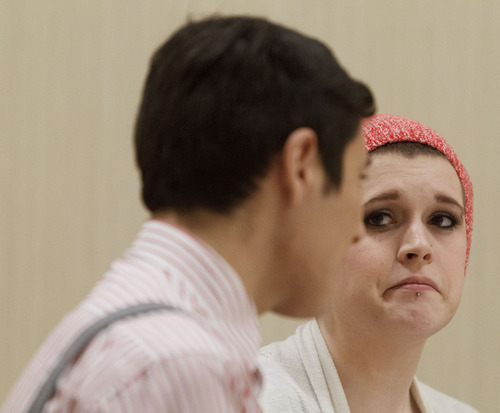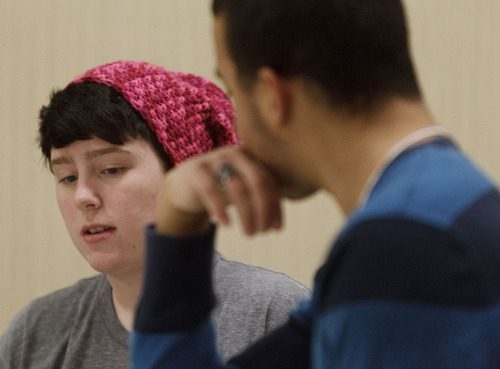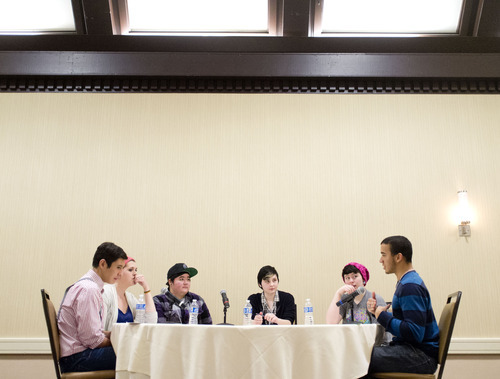This is an archived article that was published on sltrib.com in 2012, and information in the article may be outdated. It is provided only for personal research purposes and may not be reprinted.
When Elizabeth Harris came out as a lesbian to her foster parents at 15, they immediately took her to the hospital to be evaluated for a mental disorder.
But three years later, Harris is still with that family, having come to a tenuous understanding with them about her sexuality. Now, LGBT advocates and state agencies are hoping more foster families will offer support and understanding to teens who are already out as gay, or still questioning their sexuality.
Staff of the Utah Pride Center and various state and volunteer agencies met Friday at the downtown Sheraton hotel for a frank conversation about LGBT teens in foster care, and what help the adults who care for them can offer.
"We want to help them transcend the stigma they are getting, both as foster kids and as LGBT youth," said summit organizer Yvonne Paul, director of advocacy and education at the Utah Pride Center.
LGBT youth already are at greater risk for homelessness, suicide and alcohol and drug abuse, Paul said. But if they lack a strong support system while coming to terms with their sexuality, the risks rise dramatically, she said.
The state does not track the more than 2,600 children in the foster care system by LGBT status, said Elizabeth Sollis, spokeswoman for the Utah Department of Health and Human Services, so it's unknown how many there are. But foster parents who shelter such children need help to ensure the kids feel safe.
"For us, child safety is important no matter where the child is from, what their beliefs or their sexual orientation may be," Sollis said. "We want to serve all of our diverse populations."
Currently teens and foster families try to meet early in the process to improve the odds that a placement will work for both parties, said Sarah Espinoza, a caseworker with the Utah Division of Child and Family Services (DCFS), who is currently working with three LGBT youth. But it's often a system of trial and error. In the meantime, knowing what resources are available to LGBT teens is always helpful, Espinoza said. More caseworkers will get training to offer support in the future, she added.
"Just having a certificate on your office wall — it will just help them know it's a safe place and you are safe to talk to," Espinoza said.
Teens shared their experiences about coming out to a rapt audience Friday afternoon, offering suggestions on how foster families and caseworkers can help. Using respectful language in everyday speech can make a big difference, said 16-year-old Gabe, who endured being labeled "the gay Mexican" at one foster home. He urged foster families to stop talking about "sexual preference" and understand that being gay is not a choice.
The summit made Alex Stewart hopeful that her girlfriend will have an easier time in the foster system than she did. Stewart never felt comfortable coming out in her group home, because one of her lesbian roommates was so bullied she ran away. But Stewart's girlfriend is out to her foster family, and seems to be getting more support from them, from her caseworker and such third-party resources as the Pride Center.
"We're collaborating on ways to take steps forward," Stewart said. "Youth get to share their issues, but so do caseworkers and parents. It's changing the experience of being openly gay in foster care."
Twitter: @Katie_Drake







